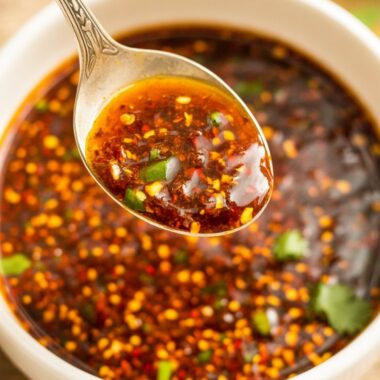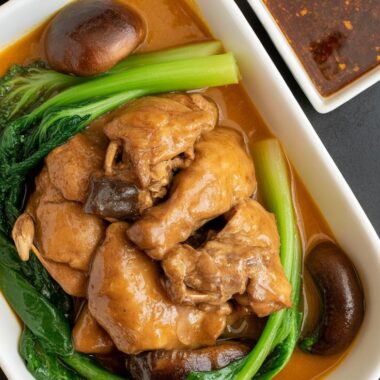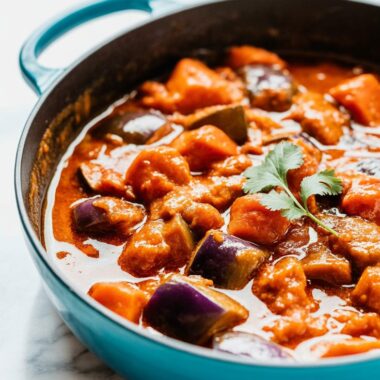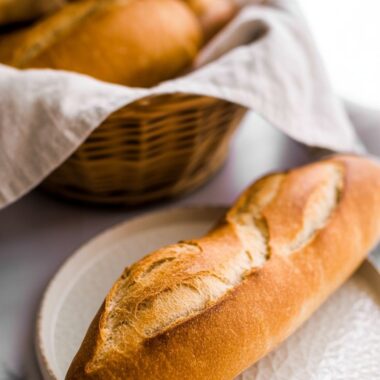If there’s one dish that instantly brings me back to post-holiday afternoons at home, it’s Lechon Paksiw. It’s what we make the day after the party, when the kitchen smells like roasted pork and everyone’s lounging in comfy clothes, still full from the night before — but somehow, still ready to eat again.
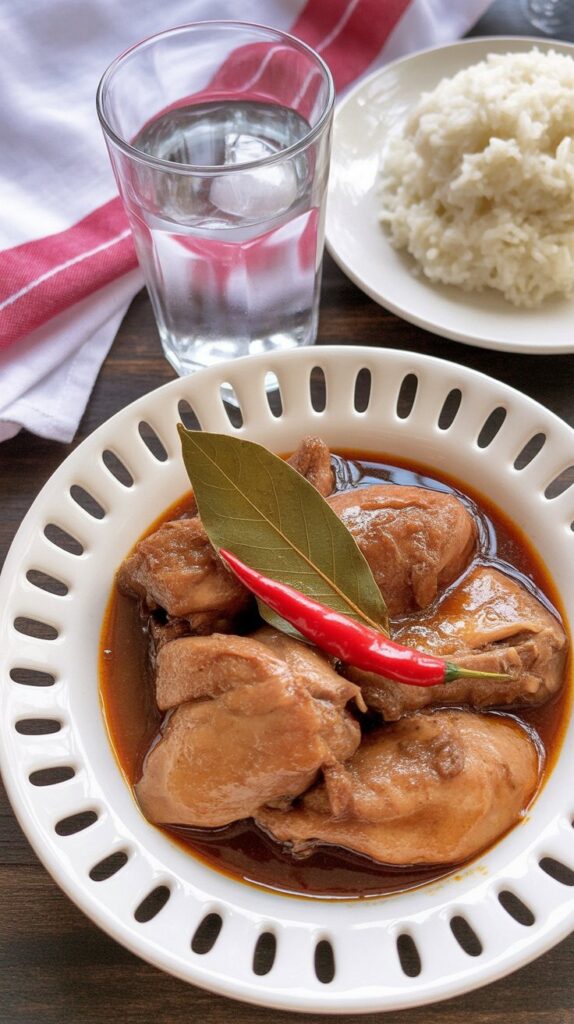
This dish turns leftover lechon into something so rich, saucy, and comforting that you’ll look forward to the leftovers more than the original roast. It’s sweet, tangy, garlicky, and so easy to throw together.
What Makes Lechon Paksiw So Good
I always say Lechon Paksiw is one of the best examples of how Filipino home cooking never lets good food go to waste. We make the most of every celebration, and we stretch flavors as far as they’ll go.
This is perfect when you’ve got leftover lechon after a party or holiday feast — it doesn’t reheat very well on its own, but simmer it in vinegar, spices, and lechon sauce and suddenly it becomes a brand-new dish. It’s not just a reheated version of something old — it becomes something deeply flavorful on its own.
I’ve made this with everything from leftover lechon kawali to roasted belly, and it always hits the spot with a bowl of rice.
Here’s What You’ll Need
Let’s talk ingredients — nothing fancy here, just pantry basics and your leftover roast pork.
- Lechon – Whether it’s classic roasted pig, belly, or even crispy lechon kawali, chop it into even pieces so it cooks evenly in the sauce. I try to keep the pieces bite-sized for easier serving.
- Lechon sauce – I usually use bottled sauce when I’m short on time. It’s sweet, tangy, and has that signature garlicky hit. If you like making your own, go for it — but for quick weeknight cooking, store-bought works great.
- Vinegar – White vinegar is the traditional choice. Don’t stir it right after pouring — just let it boil and mellow out naturally. That sharp acidic smell goes away after a few minutes.
- Onion, Garlic, Bay Leaf, and Peppercorns – These aromatics build the backbone of flavor. I always crush the garlic a little to help release its oils.
- Brown Sugar (optional) – Some lechon sauces are already sweet, so taste before you add. I personally like adding a touch of muscovado for that extra depth.
- Salt – Just enough to balance the sweetness.
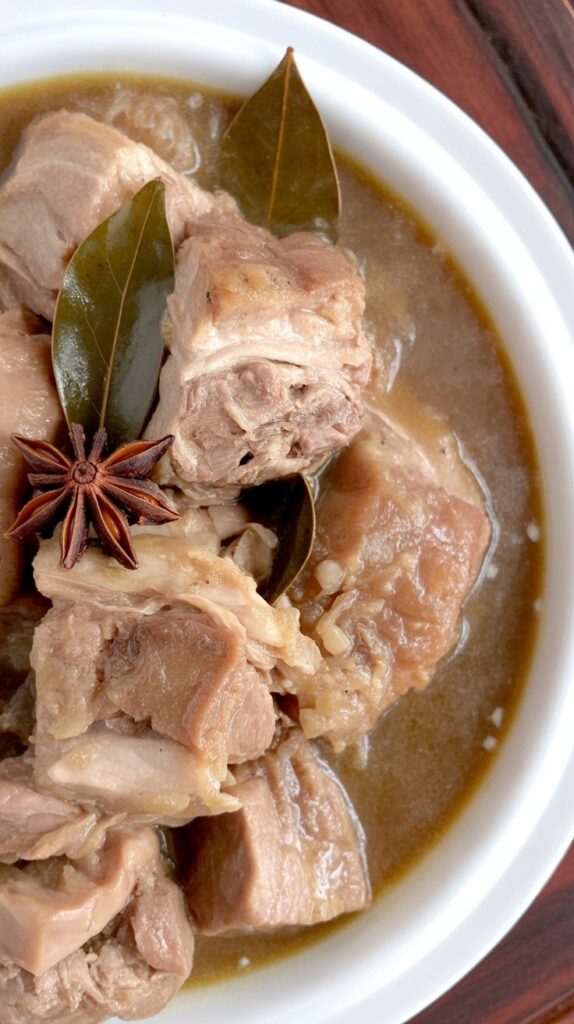
Let’s Make It: My Go-To Tips
Over the years, I’ve picked up a few tricks that always make this dish turn out better. Here’s what I do:
- No stirring after adding vinegar – I know the urge to stir is real, but give it a moment. Let the vinegar boil off a bit so it doesn’t taste harsh.
- Add liver spread if you want it richer – A couple tablespoons of liver spread stirred in at the end makes the sauce thicker and adds that deep umami flavor. This is optional, but I do it often when I want it extra savory.
- Adjust the sauce consistency – If it’s too thick (it happens), splash in a bit of hot water and simmer until it looks right. I like mine thick enough to coat the back of a spoon, but not like gravy.
- Let it rest before serving – Like many stews, Lechon Paksiw gets better as it sits. If you’ve got the time, let it sit for 30 minutes before serving — the flavors really come together beautifully.
Making It Last: How to Store Leftovers
Paksiw is actually one of those dishes that store incredibly well — probably because of the vinegar.
Here’s how I do it:
- Fridge: Keep it in an airtight container and it’ll stay good for 3 to 5 days. I actually like it better on day 2 — the flavor deepens.
- Freezer: Pack it into freezer-safe containers or zip-top bags, flatten them for easy stacking, and freeze. It can last up to 2 months. I always label them so I know what I’m grabbing later.
- Reheating: I prefer reheating it in a saucepan over low heat. If the sauce is too thick, add a splash of water and stir gently. You can microwave it too, just cover it so it doesn’t splatter everywhere.
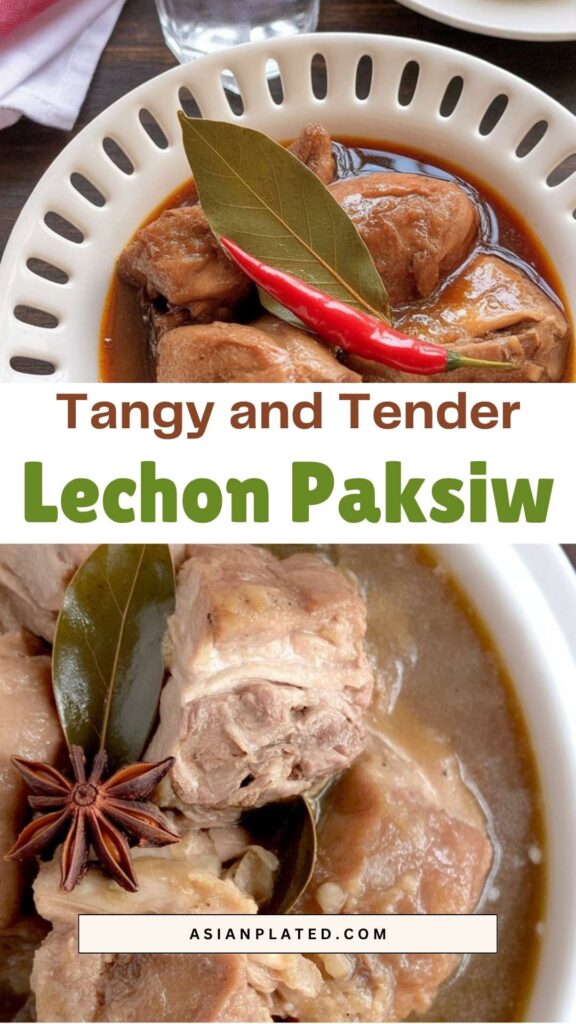
How I Serve Lechon Paksiw at Home
This dish is pure comfort with steamed rice. That’s how we always had it growing up — a big bowl of paksiw, a mound of hot rice, and maybe a fried egg if someone felt fancy.
Sometimes I serve it with pickled vegetables on the side to balance the richness. Or if we’ve got leftover pancit, I’ll serve both together — trust me, it’s not too much.
Lechon Paksiw
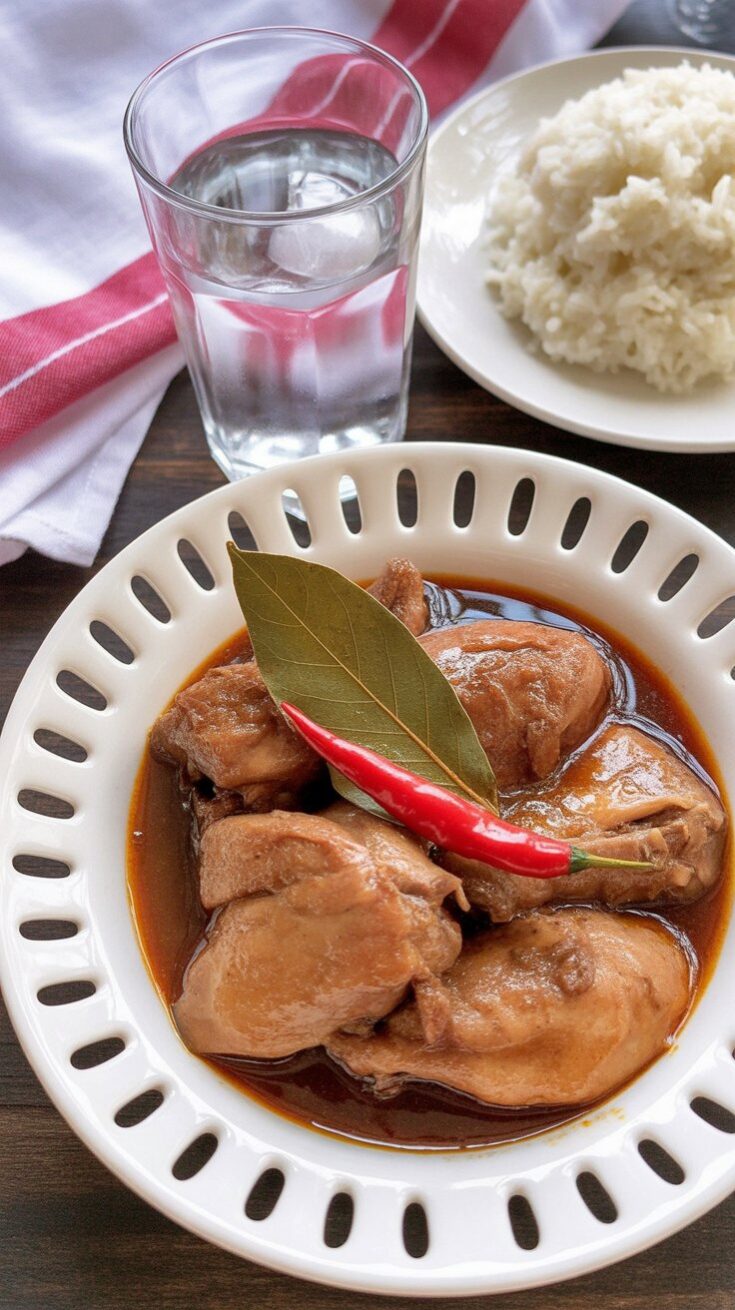
Got leftover lechon from a celebration? Don’t let it go to waste! This Lechon Paksiw is the perfect way to breathe new life into your roast pork—it’s rich, savory, a little sweet, and delightfully tangy.
Ingredients
- 2 tablespoons oil
- 3 cloves garlic, minced
- 1 medium onion, sliced
- 2 pounds leftover pork lechon, chopped into chunks
- 1 cup water
- ¼ cup vinegar
- ½ teaspoon whole peppercorn
- ¾ tablespoon salt
- 4 bay leaves
- 1 cup lechon sauce (store-bought or homemade)
- 1 tablespoon brown sugar (optional)
Instructions
- Start by heating oil in a pot or large wok over medium heat. Once hot, sauté the garlic and onions until soft and aromatic—this forms the flavor base for the dish.
- Toss in your leftover lechon and let it cook until the edges start to brown slightly. Pour in the water and allow it to simmer gently for a couple of minutes to rehydrate the meat.
- Next, add the vinegar, but don’t stir just yet—let it boil uncovered for 2–3 minutes to mellow the sharpness. Then stir in the peppercorn, salt, and bay leaves. Let everything simmer together for another minute or two, allowing the flavors to deepen.
- Pour in the lechon sauce and stir well. If you like it a bit sweeter, add the brown sugar. Let it all simmer for a few more minutes until the sauce thickens slightly and clings to the pork.
- Serve hot over rice and enjoy every saucy bite!
Nutrition Information:
Yield: 4 Serving Size: 1Amount Per Serving: Calories: 807Total Fat: 51gSaturated Fat: 16gTrans Fat: 0gUnsaturated Fat: 30gCholesterol: 250mgSodium: 1505mgCarbohydrates: 9gFiber: 1gSugar: 5gProtein: 74g
Asianplated.com, occasionally offers nutritional information for recipes contained on this site. This information is provided as a courtesy and is an estimate only. This information comes from online calculators. Although allchickenrecipes.com attempts to provide accurate nutritional information, these figures are only estimates.
Quick FAQ
Can I make this without lechon?
Yes! I’ve used lechon kawali, roasted pork belly, and even thick slices of pork roast. Just make sure there’s some crispy skin or fat on the meat — it adds a lot to the flavor.
Is the liver spread necessary?
No, it’s optional. But if you want that rich, deep flavor like what you get in some restaurant-style paksiw, it makes a big difference.
Can I make this ahead of time?
Absolutely. In fact, I recommend it. The longer it sits, the better it tastes. Just reheat gently and maybe add a little water if the sauce thickens too much.
If you’ve got leftover lechon sitting in your fridge, don’t let it go to waste. Turn it into Lechon Paksiw and you’ve got a meal that’s sweet, tangy, and made for cozy afternoons.
Let me know how it turns out in your kitchen — and don’t forget the extra rice.
Try other Filipino recipes:

